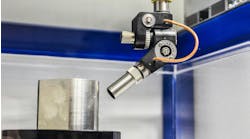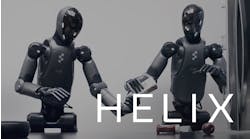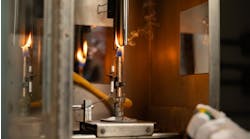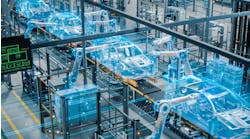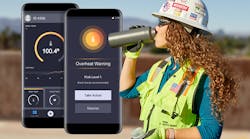Latest from Product News
McCarthy Partners With Kenzen to Pilot Wearable Heat Safety PPE
Perennially recognized as one of America’s safest builders, McCarthy Building Companies, Inc. is partnering with Kenzen to pilot wearable heat monitoring technology on multiple construction projects. Kenzen’s smart PPE devices monitor the heat status of workers in hot and humid conditions, helping predict and prevent heat stress and illness. Together, the organizations will gain valuable insight into how the technology can minimize the risk of heat illness and protect the broader construction workforce.
“Safety is the most important thing we do every day, and on many projects that includes heat awareness and heat illness prevention,” said McCarthy Vice President National Safety Pat Devero. “The Kenzen system is already helping us identify new ways to prevent heat illness, assist in validating our current practices and heat illness expectations, and is a great example of how embracing technology can improve our industry’s approach to health and safety.”
The Kenzen device is a sensor worn on a worker’s upper arm that monitors, in real-time, an individual’s physiological markers that trigger heat injury risks. This includes a sweat rate monitoring feature that uses a worker’s information and physiological data to calculate and predict their sweat rate in liters per hour. Using a proprietary algorithm, the Kenzen device can alert workers of dangerous heat stress via a smartphone app. The data helps eliminate guesswork about how to keep workers safely hydrated and makes it possible for individual workers to know the specific amount of water they need to drink to stay safe.
On-site managers have access to alerts and corporate safety leaders use an analytics dashboard to monitor and evaluate risks to individuals and teams, helping them optimize worker safety. McCarthy will use the technology to identify broad trends that affect all projects and implement preventative measures to increase safety and productivity.
“The Kenzen pilot was a valuable program for our jobsite,” said Andrew Rhines, McCarthy Project Safety Coordinator in Texas. “It benefitted the craft professionals on our site and the data gathered by Kenzen helped verify many different aspects of our national heat illness prevention plans including water consumption and scheduled breaks.”
McCarthy and Kenzen are equally committed to protecting user data; the system does not reveal personal information or reasons why someone is in a particular heat risk category; it is only used to monitor and manage people according to their individual heat susceptibility.
McCarthy makes education about heat illness and injury prevention a priority during the spring and early summer as temperatures increase. The company shares educational information internally, hosts on-site educational and training sessions, and makes resources available for its workforce in-person and online. On projects in high heat areas, McCarthy provides hydration aids, shade stations, cooling fans, and brimmed head protection to reduce heat. It’s also common for the projects to alter schedules, allowing the day’s work to be completed before the hottest portion of the day.
From 1992 through 2017, there were 70,000 serious injuries and 815 deaths caused by exposure to excessive heat, according to the Bureau of Labor Statistics. Of the 492 occupational fatalities attributed to exposure to environmental heat from 2003 to 2016, 179, or 36 percent, were in the construction industry.
“McCarthy is a leader in exploring all opportunities to keep employees safe,” said Heidi Lehmann, Kenzen co-founder and President. “With the Kenzen system, they can tailor their approach to individuals, teams, and projects because they have access to new, highly detailed information. This information helps manage risk, realize increased productivity, and meet every worker’s unique requirements for working safely.”
McCarthy has selected several pilot opportunities for the Kenzen system on jobsites in Arizona, Georgia, and Texas. Employees using the system understand the protective value it offers and appreciate receiving notifications about their core body temperature, sweat rate, and hydration status – when they should stop and rest, and when it’s safe to return to work.
“The Kenzen system has been a successful initiative for our team and how we approach heat illness risk onsite,” said Sean Blakemore, McCarthy Project Safety Manager in Texas. “The entire Kenzen team is resourceful and is helping us maximize management of the program. The data we’re gathering is a significant benefit for us to not only verify and confirm our current approach, but it also helps everyone understand what drives the additional mitigation measures we take in order to send everyone home safely at the end of each day.”
